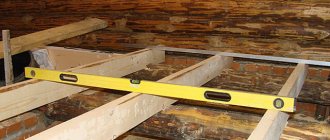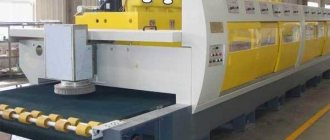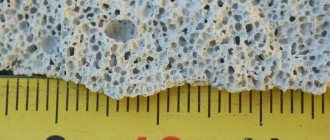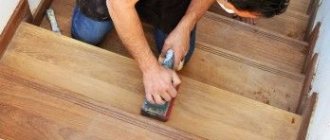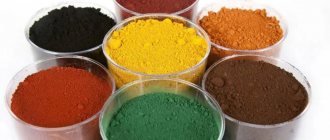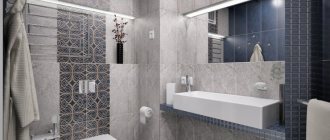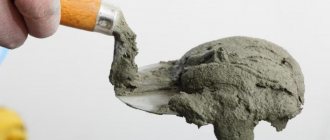Share with friends:
A staircase leading to the second floor in a private house or a two-level apartment looks like an original decorative element in itself. And the overall image of the room largely depends on the material that lies on its steps.
The covering on the steps not only extends the service life and creates a unique design, but also protects the occupants of the house from falling. Therefore, special attention must be paid to the choice of material.
At the initial stage, you need to understand for what purpose additional material needs to be installed on the steps, and there may be several reasons:
- Protection of the structure from natural factors;
- Increasing the level of surface wear resistance;
- Giving a more aesthetic appearance;
- Creating a more reliable grip on shoes;
- Preventing road surface contamination;
- Combating emerging irregularities;
- Increasing the level of sound and heat insulation.
Whatever goal customers set for themselves, there are many products on the finishing materials market that are suitable for all occasions, and some of them seem to be specially created for stair steps.
Paintwork
An affordable way for those who want to keep the wood texture intact. And some products will even help emphasize the natural pattern. In addition, paints and varnishes protect against parasites and extend the life of the tree.
What falls into this category?
- Dye
. The advantage is that with the help of paints you can change the appearance of the structure beyond recognition, but the natural pattern will be hidden under the colored layer; - Varnish
. Most often used. A glossy sheen or matte surface looks great, and the varnish protects against damage, moisture and mold; - Wood stain
. A budget option, but no less beautiful and reliable. The stain forms a kind of protective coating that makes every detail of the wood contrasting and readable; - Wax
. Gives a light tone, repels moisture and adds the effect of sanded wood. This coating will have to be renewed periodically so that it does not lose its properties.
You can handle paint and varnish products yourself. It is enough to select products suitable for a particular type of wood and follow the instructions printed on the packaging.
Criteria for choosing varnish material
The staircase structure consists of the working surface of the steps and other parts. These two main components experience different loads.
The steps are subject to wear load. If the protective layer on their surface is weak, then the heels will leave marks. This is because pine is characterized by low wood density.
Handrails, the back of steps, and fittings are practically not subject to load. Therefore, the applied varnish for the stairs in this case will perform decorative and protective functions (from moisture and rotting).
Varnish for pine stairs is selected based on the following functional division of the main elements:
- To cover the steps, polyurethane parquet varnish for wooden stairs is used. It forms a durable coating with a high degree of wear resistance. The material is expensive. It is used to create a protective and decorative layer.
- The answer to the question of which varnish to choose for stair steps in order to hide signs of wear in their central part is very simple - it is a matte or semi-matte varnish. The matte surface does not slip, which makes the staircase structure safe. The worn-out gloss on the steps spoils the appearance.
- Fittings or elements that are not subject to stress are treated with an inexpensive nitrocellulose varnish composition NTs, the second option is alkyd PF-170.
For coniferous species, special LM are selected due to the fact that the fibers have increased resin content.
The work uses 4 types of varnish:
- The composition, based on alkyd resins, is anhydrous. It copes with changes in humidity and temperature fluctuations. Penetrates deeply into wood. Applied as a decorative coating. Wears out quickly. Used to cover stairs indoors and outdoors.
- Water-based composition – water soluble. It is applied after a layer of primer. The material is odorless, environmentally friendly. To process the stairs, a two-component composition is used. If one of the elements is a solvent, then the coating will be durable.
- Treatment of stairs inside the house - varnish with an oil base.
- The most durable composition is acid-curing. It is applied to areas with heavy load.
For staircase structures on the street, it is recommended to use LM for yachts. It is also used indoors. Its main advantage is its tolerance to atmospheric influences and low temperatures. In houses without permanent residence, a yacht composition is preferable.
A correctly selected varnish will perform a protective or decorative function. If all technological stages of applying the material are followed, then as a result a pine staircase will become a decoration of the house and will be used for many years.
Carpets
The soft surface can be seen not only in private homes, but also on the staircase structures of hotels, restaurants, administrative and educational institutions and in many other places. Depending on the height and composition of the pile, carpets are easy to clean and last quite a long time.
The main advantages of carpet and carpet runners:
- Thermal insulation;
- Soundproofing;
- Beautiful drawings and patterns;
- Comfort when walking barefoot;
- Anti-slip protection.
In a private home, the coating can be fixed with ordinary corners or glued.
But the latter option is not recommended, because when replacing the path, the surface of the wooden steps will in any case be damaged, after which they will have to be sanded again.
The most convenient option for fixing carpet runners is to use carpet holders. This is not only a good tradition, but also an undoubted benefit. After all, the paths can be easily removed and laid down for periods of large number of visitors.
Some homeowners cut carpet or runners into squares and secure them to the stairs. Why is this so convenient? It's simple - after the renovation, thrifty owners probably have unused pieces of coating that can be put into useful use!
Laminate or PVC
We will not consider ordinary linoleum, because rolls are not so convenient to adjust to the desired size, unlike ready-made laminate dies and PVC tiles. They are ideal for mounting on steps.
First, a few words about laminated boards:
- In order to maintain the attractive appearance of the staircase steps, the corners must be covered with special corners;
- If you do not install a sound-absorbing substrate, then moving up the stairs will be very loud, especially at night in complete silence;
- Laminate is quite slippery, and when going downhill in socks or immediately after wet cleaning there is a high risk of slipping and falling, so it is best to use additional pads.
With PVC tiles things are much simpler. It is easy to install without problems, easy to cut and is famous for its large selection of designs.
In its structure, it is somewhat similar to household linoleum, but much stronger and more durable. For vinyl tiles, you will also need end fasteners and corners on the long side. Instead of planks, you can attach simple skirting boards, the main thing is that they match the style.
What material is better for stairs
On sale you can find various types of wood intended for the manufacture of a wide range of objects - from children's toys to walls and ceilings in buildings. Before you buy material for stairs, you need to study the features and advantages of the main types of wood.
Main characteristic: hardness
Four types of lumber are used for the manufacture of staircase structures:
- soft: spruce, pine;
- medium hard: pear, walnut, larch;
- hard: oak, ash, yew;
- very hard: beech.
This characteristic is responsible for the ability of wood to stick together, as well as accept and hold nails and other connecting elements. In addition, the harder the wood, the more durable and wear-resistant products made from it will be.
It should be remembered that hard wood requires special skill in processing, since a lack of experience can lead to cracking of the boards. Soft, on the contrary, perfectly accepts nails, but is prone to rapid wear.
Wear resistance
The material for the staircase determines its service life. Since the steps account for the bulk of the mechanical impact, it is better to use hard, wear-resistant types of wood for these elements.
Moisture resistance
Under the influence of moisture, the wood becomes deformed and begins to rot. This problem is especially relevant for stairs outdoors or in rooms with high humidity. To avoid problems, it is recommended to buy larch or oak boards.
Cost of materials
Most often, the highest cost is demonstrated by the most wear-resistant and durable wood species. However, if we are talking about the beauty of texture, then the combination of characteristics may come first. Thus, the price of beech boards is slightly lower than that of oak, although this material is much stronger and harder. When choosing wood for stairs, you should focus on your individual budget and design features of the project.
Antique wood painting - 4 implementation technologies
Other products
Crumb rubber surfaces are best suited for outdoor use. Here they will be able to withstand even the lowest temperatures, and in heavy rainfall they maintain good grip on the tread of the shoe, but such steps can hardly be called bright and unusual.
Porcelain tiles are also created for harsh outdoor conditions, because their thickness and composition allow them to withstand high and intense loads for a long period of time. Surfaces can be matte, corrugated, glossy, colored and plain, as well as with imitation of other textures.
Natural stone is very expensive and weighs a lot, but in any decor it looks luxurious and unique. Do you want steps made of marble or granite? Then hire an experienced craftsman to strengthen the structure and lay the panels in accordance with all the rules!
Mosaic steps are a magnificent look and extremely labor-intensive work. Using mosaics, you can create real works of art or lay out intricate patterns. But if you don’t take care of it, then over time the parts will simply begin to fall off.
The polyurethane mixture is made on the basis of a special resin and fine quartz sand, and therefore has a special viscous consistency. Polyurethane envelops the steps, forming a reliable protective layer that must be carefully leveled. Did you want an “eternal” staircase without any frills? Then this option is perfect!
Having difficulties with laying coatings? Ask for advice at the Toppols club!
Applying varnish
Before varnishing the stairs, you need to prepare the object and select a paint and varnish product. Wear safety glasses, gloves and a mask to avoid contact of the mixture with your skin and eyes.
Pay attention to: Why and how to varnish wallpaper?
Inventory
Varnishing requires special materials in your inventory. These include:
- turpentine or acetone;
- paint and varnish;
- brushes with natural bristles (for liquid varnishes) or round paint brushes (for thick compositions);
- sanding tool or stiff brushes.
Turpentine
Technical acetone
Set of brushes for work
Application technology
The house must be ventilated and the windows left open. This simple precaution will get rid of the specific smell. The procedure is extremely important when using formaldehyde products containing toxins. Algorithm of actions:
- Wipe the dust, wash the floors in the room. Cleaning will eliminate dirt from sticking to the painted stairs.
- Clean the stairs from dust and dirt. Remove old coating, if present. Make the surface smooth and even using a sanding tool.
- Apply primer. It promotes better adhesion of the material and varnish.
- Apply the product along the wood structure in wide stripes, holding the brush at a 90-degree angle. After the varnish has dried, apply a second layer across the stairs, then along them.
- Carefully inspect the stairs for any lint that has fallen from the brush and remove them.
- Leave the structure until completely dry. If the steps turn out to be slippery, you need to lay rugs on them.
Experts advise, if possible, to disassemble the structure. It is much more convenient to paint the stair elements separately from each other. In addition, you need to stir the paint and varnish material (especially with a viscous composition) before each application.
Before carrying out work, it is necessary to clean the surface
We plaster and apply varnish to the surface. Please pay attention to: How and with what to cover wooden lining?
